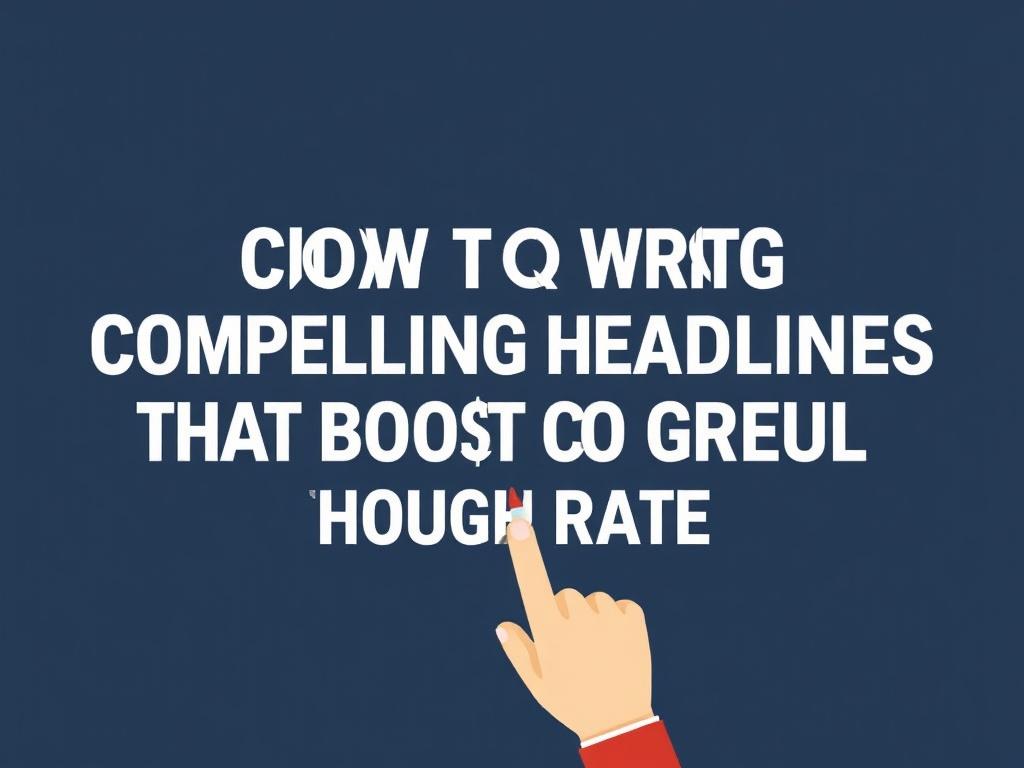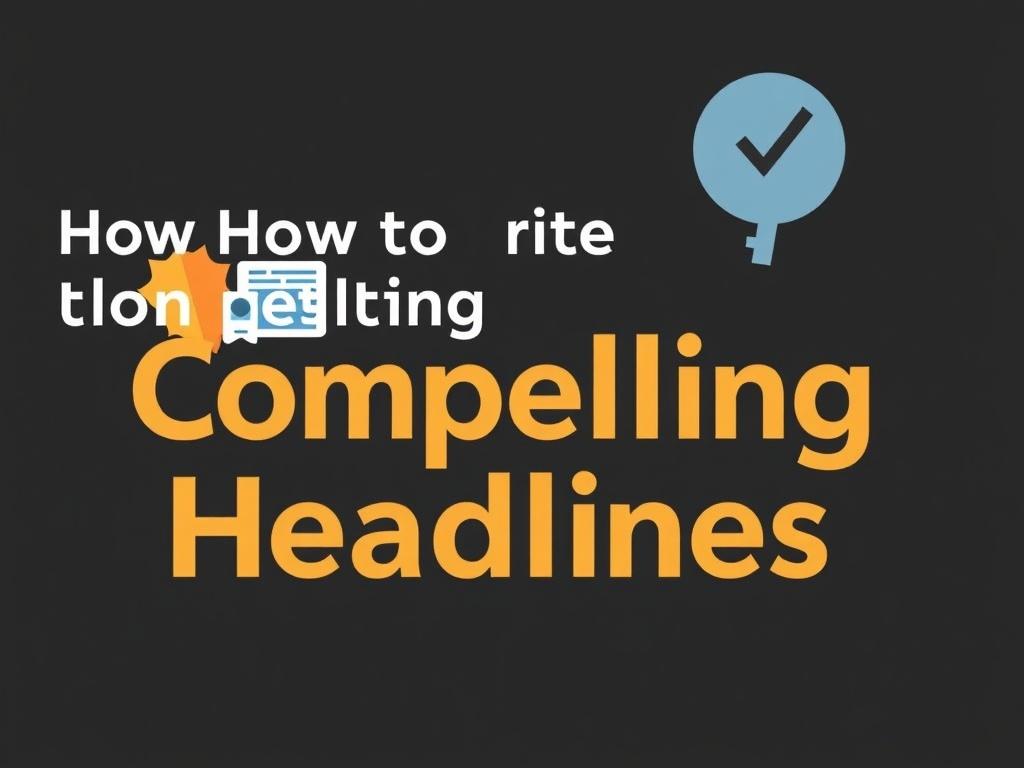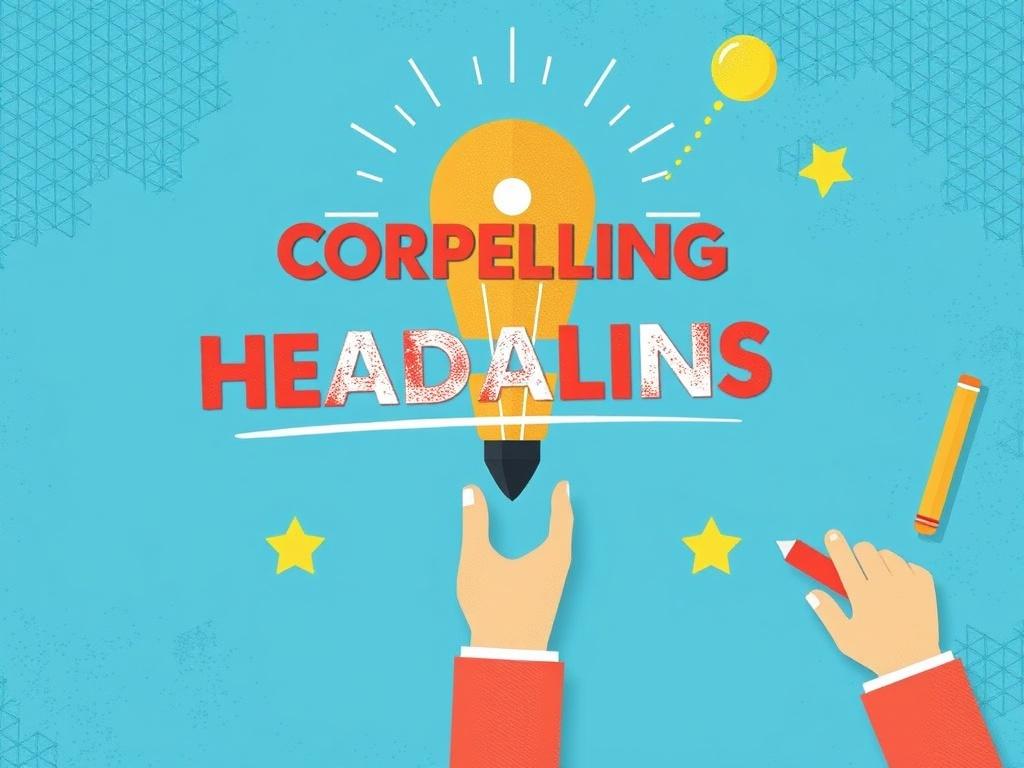Writing headlines is a little like being a short-order chef for attention. You have seconds to serve up something tasty, and the difference between a headline that sizzles and one that sours can mean thousands of extra visitors — or silence. In this article I’ll walk you, step by step, through the craft and science of headline writing. We’ll cover psychology, proven formulas, testing strategies, SEO considerations, common mistakes, and practical templates you can use right away. Whether you’re writing posts for a blog, subject lines for emails, or titles for social media, you’ll leave with clear tactics to boost click-through rates and keep readers coming back.
Why Headlines Matter More Than You Think
Headlines are the first — and often only — thing most people read before deciding whether to click. They’re the gatekeepers for your content. A brilliant piece of writing with a weak headline can die on the vine; conversely, a great headline can lift even average content into the spotlight. In short: headlines control attention, and attention converts into clicks, shares, and business results.
Beyond clicks, headlines set expectations. A headline promises a certain experience. If the content doesn’t deliver, readers feel tricked and your brand loses credibility. So the headline’s job is twofold: attract attention and accurately represent what’s inside. Do that well, and you’ll increase click-through rates, reduce bounce rates, and build a more engaged audience.
The Numbers Behind the Claim
Human attention is a limited resource. Research shows that most people scan headlines quickly and make split-second decisions. It’s estimated that 80% of people read headlines, but only 20% read the rest of the content. That’s why improving headline quality is one of the highest-leverage edits you can make to your content strategy.
Fundamental Principles of a Great Headline

A headline that boosts CTR (click-through rate) tends to have a few consistent traits. These aren’t magic tricks — they’re pattern recognition and persuasion techniques rooted in psychology and communication.
Be Clear, Not Clever
Clarity beats cleverness almost every time. A clever headline that confuses people won’t get clicked. Make your value proposition obvious: what will the reader get, and why should they care?
Tap Into Emotion
Emotional triggers drive clicks. Curiosity, fear of missing out, greed, joy, surprise — headlines that stir emotion earn attention. But be mindful: emotion must be tempered by honesty. Manipulative headlines may get an initial click but cost trust over time.
Use Specifics and Numbers
Specific numbers and concrete promises increase perceived value and credibility. “10 ways to” performs better than “ways to” because it sets a clear expectation. Odd numbers (7, 11, 19) often outperform even numbers because they feel more authentic.
Create a Curiosity Gap
The curiosity gap is the space between what people know and what they want to know. Headlines that leave a hint — not the whole story — entice clicks. However, avoid withholding so much that the headline feels like clickbait.
Keep It Readable
Shorter headlines are easier to skim and often perform better in social environments. But readability isn’t just length; it’s rhythm, word choice, and structure. Use active verbs and keep the subject close to the front.
Types of Headlines and When to Use Them

Different formats work for different goals and audiences. Here’s a useful breakdown of headline types, with simple descriptions and when to use each.
List Headlines
List headlines promise a finite set of takeaways (e.g., “7 Ways to…”). They work well when readers want quick, scannable value. Perfect for blog posts, How-Tos, and evergreen content.
How-To Headlines
“How to” headlines are action-oriented and practical. Use them when you’re teaching a skill or solving a problem. They perform well in search contexts because they match user intent.
Question Headlines
Questions can invite curiosity, but they should be specific and relevant to your audience’s concerns. Avoid rhetorical fluff; ask something people actually care about.
Command Headlines
Imperative headlines tell readers to take action (“Stop wasting time…”). They’re bold and direct, often useful for marketing and ad copy.
Curiosity/Teaser Headlines
These create a curiosity gap but must deliver value to avoid seeming deceptive. They’re great for social posts where a hook can pull readers in quickly.
News and Announcement Headlines
Timely and straightforward, these work best for updates, press releases, and content that relies on recency.
Headline Formulas That Work
If you’re starting from a blank page, having go-to formulas is a lifesaver. Below is a table with reliable headline templates, what they promise, and an example so you can adapt them.
| Formula | Promise | Example |
|---|---|---|
| How to [Result] in [Timeframe] | Clear transformation and timeline | How to Double Your Email Open Rate in 30 Days |
| [Number] Ways to [Benefit] | Scannable, specific benefits | 11 Ways to Write Headlines That Boost CTR |
| [X] Secrets of [Desired Outcome] | Insider knowledge | 7 Secrets of Headlines That Get Clicks |
| Why [Common Belief] Is Wrong | Contrarian angle that invites curiosity | Why “Longer Headlines” Are Not Always Better |
| Do You Make These [Problem] Mistakes? | Shame + helpful fix | Do You Make These Headline Mistakes? |
Step-by-Step Headline Writing Process
Crafting a great headline doesn’t have to be mysterious. Here’s a repeatable process you can use every time you write.
1. Know Your Audience
Start by imagining the person who will read your headline. What language do they use? What problems keep them up at night? The better you know your reader, the more precise and resonant your headline will be.
2. Clarify the Core Benefit
Ask yourself: if someone reads this article, what will they walk away with? Boil it down to one sentence. That clarity should be the backbone of your headline.
3. Brainstorm 10–20 Options
Don’t settle on the first headline you write. Generate a handful of variations — different tones, lengths, and angles. Aim for quantity first, then quality.
4. Use a Formula, Then Customize
Pick a formula (list, how-to, question) as a starting point and then personalize it with specifics, numbers, and power words.
5. Test for Clarity and Interest
Read your headline aloud. Would your audience understand the value? Does it create just enough curiosity? Ask a peer for a quick read to catch ambiguous phrasing.
6. Optimize for Platform and SEO
Match the headline to the platform’s constraints (e.g., email subject lines are short; Facebook may prioritize engagement). If SEO is important, incorporate relevant keywords naturally.
7. A/B Test Where Possible
If you have the traffic, test multiple headlines to see which performs best. Small lifts in CTR compound over time.
Power Words and Emotional Triggers
Words have power. Certain words consistently increase interest and urgency. Use them judiciously to boost attraction.
Examples of Power Words
- Free
- Proven
- Secret
- Instant
- Essential
- Exclusive
- Effortless
- Limited
Sprinkle power words into your headlines when appropriate, but don’t overdo it. Too many power words can make a headline sound like spam.
Emotional Triggers to Consider
- Curiosity — create a gap that’s safe to close.
- Urgency — suggest limited time or scarcity.
- Belonging — imply that readers will be “in” on something.
- Fear/Relief — highlight a risk and offer a solution.
- Greed/Benefit — promise a clear advantage or payoff.
SEO and Headline Strategy
Headlines must speak to humans and search engines. Balancing both is key for long-term traffic.
Include Primary Keywords Naturally
If people search for a topic using specific terms, include those words in your headline. But don’t force them; unnatural phrasing hurts both CTR and SEO.
Maintain Clickable Lengths
Search engines and social platforms often truncate long titles. Aim for a title length that displays fully across the places where you expect to gain traffic:
- Google SERP: around 50–60 characters
- Facebook/Twitter: keep it shorter for mobile-friendly display
- Email subject lines: 30–50 characters is often optimal
Meta Titles vs. On-Page Headlines
You can sometimes test different headline variations in the meta title (the one shown in search) versus the on-page H1. Use the meta title to optimize for clicks in search, while the on-page headline serves the reader who lands on the page.
Testing and Measuring Headline Performance
Improving headlines becomes predictable if you measure and iterate. Here’s how to set up a simple testing framework.
Key Metrics to Watch
- Click-Through Rate (CTR) — primary measure of headline success
- Bounce Rate — indicates whether the headline accurately represented content
- Time on Page — suggests engagement after clicking
- Conversion Rate — ultimate business metric tied to clicks
A/B Testing Basics
If you use email, social ads, or a CMS that supports headline experiments, create two versions (A and B) and split traffic evenly. Run tests long enough to gather statistically meaningful results — usually at least a few hundred impressions or clicks, depending on your baseline.
Qualitative Feedback
Numbers are great, but qualitative feedback (comments, user surveys, heatmaps) reveals why a headline works or fails. Combine quantitative tests with occasional user interviews or micro-surveys.
Common Headline Mistakes and How to Avoid Them
Even seasoned writers slip up. Here are recurring problems and quick fixes.
Being Vague
Vagueness kills clicks. Fix it by adding specifics: how many, how long, who will benefit, and what the exact outcome is.
Clickbait Without Payoff
Headlines that overpromise and underdeliver erode trust and reduce long-term engagement. Always ensure the content delivers the headline’s promise.
Overusing Superlatives
Words like “best,” “ultimate,” and “never-before” lose meaning when used too often. Reserve them for legitimately exceptional claims.
Ignoring Platform Differences
A headline that works on LinkedIn may flop in an email subject line. Tailor headlines to the audience context and platform constraints.
Forgetting to Test
A headline that feels great in your head could still underperform. Test anything that’s important to business outcomes.
Advanced Tactics for Experienced Writers

Once you’re comfortable with the fundamentals, these advanced strategies can squeeze additional performance out of your headlines.
Compound Angle Headlines
Combine two benefits or create tension by offering a benefit and a caveat. Example: “How to Write Faster — Even If You Only Have 15 Minutes a Day.” This signals both payoff and realism.
Use of Negative and Reverse Psychology
Sometimes telling people what not to do can be more compelling. Example: “Why You Should Stop Trying to Go Viral.” The negation implies a deeper perspective.
Personalization at Scale
For emails and ads, personalize headlines with names, company types, or industries. Personalization increases relevance and clicks, but only when done correctly and respectfully.
Harnessing Social Proof
Mentioning numbers (15,000 subscribers), reputable partners, or recognizable clients in a headline can increase perceived credibility and CTR.
Headline Templates and Examples
Below is a list of adaptable templates you can use immediately and examples to spark ideas. Use them as starting points, not strict rules.
- How to [Desired Outcome] Without [Pain Point] — How to Grow Sales Without Spending on Ads
- [Number] [Adjective] Ways to [Benefit] — 9 Simple Ways to Improve Your Headlines
- The [Insider/Secret/Guide] to [Result] — The Startup’s Guide to Viral Headlines
- What I Learned From [Experience] — What I Learned From Testing 1,000 Headlines
- Are You Making These [Mistakes]? — Are You Making These Headline Mistakes?
- Why [Conventional Wisdom] Is Wrong About [Topic] — Why “More Words” Is Not The Answer
Examples: Before and After
A practical way to learn is by rewriting headlines. Below is a small table showing weak headlines and improved versions that increase clarity and interest.
| Before | After | Why It’s Better |
|---|---|---|
| Improve Your Marketing | 7 Quick Marketing Tweaks That Increase Leads in 30 Days | Specific number, timeframe, and clear benefit |
| Tips for Better Email | How I Boosted Email Open Rates by 45% With One Simple Change | Personal story, measurable result, and curiosity |
| Blog Optimization Guide | The Essential Blog SEO Checklist You Can Implement Today | Urgency, specificity, and actionable promise |
Tools and Resources to Speed Up Headline Creation
You don’t have to go it alone. Several tools can jumpstart ideas, evaluate sentiment, or help test headlines.
Headline Generators
Automated headline generators provide quick permutations. Use them for inspiration, not as final copy.
Analytics Platforms
Tools like Google Analytics, email service provider reports, and social analytics reveal how different headlines perform across channels.
Use of AI and Copywriting Assistants
AI tools can create dozens of headline variations quickly. Combine machine-generated options with your human judgment to pick the best.
A Practical Headline Checklist
Before you publish, run your headline through this quick checklist to catch common issues.
- Is the benefit clear in one sentence?
- Does it use specific numbers or details where helpful?
- Would someone unfamiliar with the topic understand it?
- Does it match the tone of the platform and audience?
- Is it free of clickbait or misleading phrasing?
- Have you tested variations or at least brainstormed several options?
Case Study: Small Changes, Big Impact
Imagine a mid-sized blog with steady traffic but low engagement. Their average CTR on social posts is 1.2%. After a two-week headline refresh — adding numbers, clarifying benefits, and A/B testing subject lines — their social CTR rose to 2.6%, and average time on page increased by 30%. The cost was minimal: a few hours of rewriting and testing. The lesson: even small headline improvements often produce outsized returns.
How to Rescue a Headline That Isn’t Working
If a headline underperforms, don’t panic. Here are steps to diagnose and fix the problem.
1. Check the Relevance
Is the headline aligned with the audience and platform? If not, revise to match intent.
2. Analyze the Traffic Source
Different sources bring different expectations. Social traffic often responds to emotional hooks; search traffic prefers clear, solution-oriented text.
3. Test a Radical Rewrite
Sometimes incremental edits don’t move the needle. Try a completely different angle — personal story, contrarian stance, or an attention-grabbing number.
4. Review the Content
Is the content delivering the headline’s promise? If readers bounce immediately, the headline may be accurate but the article fails to deliver; that’s a content problem, not just a headline issue.
Balancing Ethical Considerations
Headlines are persuasive by design, but persuasion need not be manipulation. Ethical headline writing means:
- Delivering on promises — avoid misleading hooks
- Respecting reader agency — don’t use fear tactics for minor benefits
- Being transparent about incentives (e.g., sponsored content)
Long-term audience trust is worth more than a short-term spike in clicks.
When Sensationalism Backfires
Sensational headlines may win attention, but they can also result in higher bounce rates and lost subscribers. Make a habit of asking if your headline is something you’d be proud to be quoted for.
Summary: Practical Tips You Can Use Tomorrow
If you want a quick action plan, here are tasks to try right away:
- Rewrite the five most visited pages on your site with new headlines using the formulas above.
- Run an A/B test in email or social for two headline variants this week.
- Create a swipe file of headlines that earned high engagement in your niche and analyze what they share.
- Use one power word and one number in alternating headlines to measure impact.
Small experiments compound. The more you practice, the better your intuition becomes.
Resources for Further Learning
Books, blogs, and courses can deepen your headline skills. Read widely across marketing psychology, copywriting, and analytics. Try to consume examples from multiple formats — email, search, social — and reverse-engineer why certain headlines work.
Quick Reference Table: Do’s and Don’ts
| Do | Don’t |
|---|---|
| Be specific and clear | Be vague or fluffy |
| Match headline to content | Overpromise and underdeliver |
| Use numbers and power words sparingly | Stuff every headline with buzzwords |
| Test variants and measure | Assume feelings equal results |
Final Thoughts
Headlines are where craft meets science. A really good headline doesn’t happen by accident — it’s the outcome of understanding your audience, testing, and refining. Use formulas to get started, but always adapt them to fit context and truth. Invest the time in headline work; it’s one of the highest-ROI activities in content creation. Headlines that boost click-through rates send more readers to your content, and more readers mean more opportunities to help, educate, and convert.
Conclusion
Writing headlines that consistently boost CTR is a skill you can develop: start with clarity, use emotion and specificity, try proven formulas, and measure results. Avoid shortcuts that trade trust for clicks, and make testing part of your routine. Over time, small improvements will compound into meaningful increases in traffic and engagement, and you’ll find that the headlines you once struggled with become some of your sharpest tools for connecting with readers.